Walterclough
Walterclough
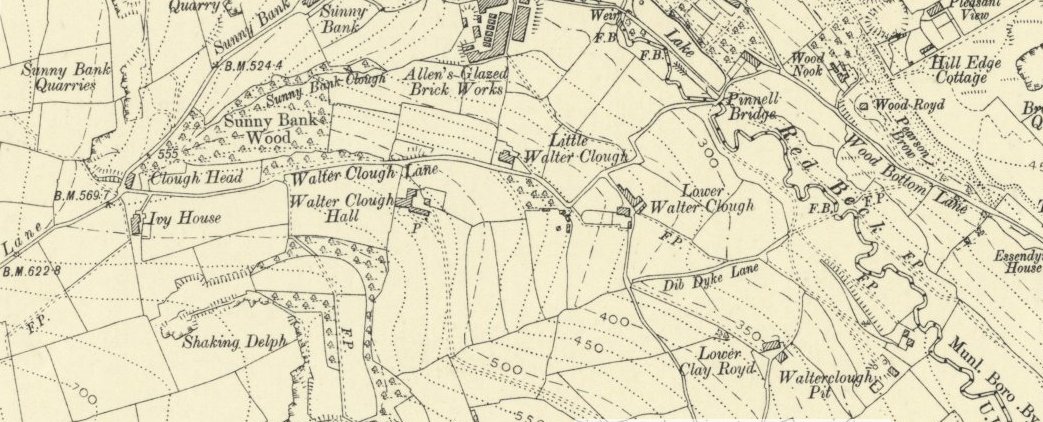
Walterclough Hall
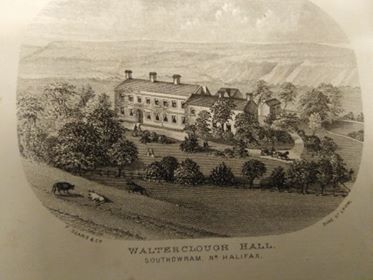
The Story of Walterclough Hall>>>
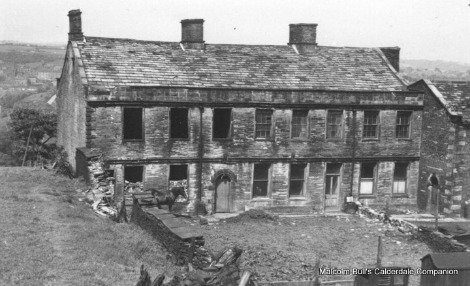
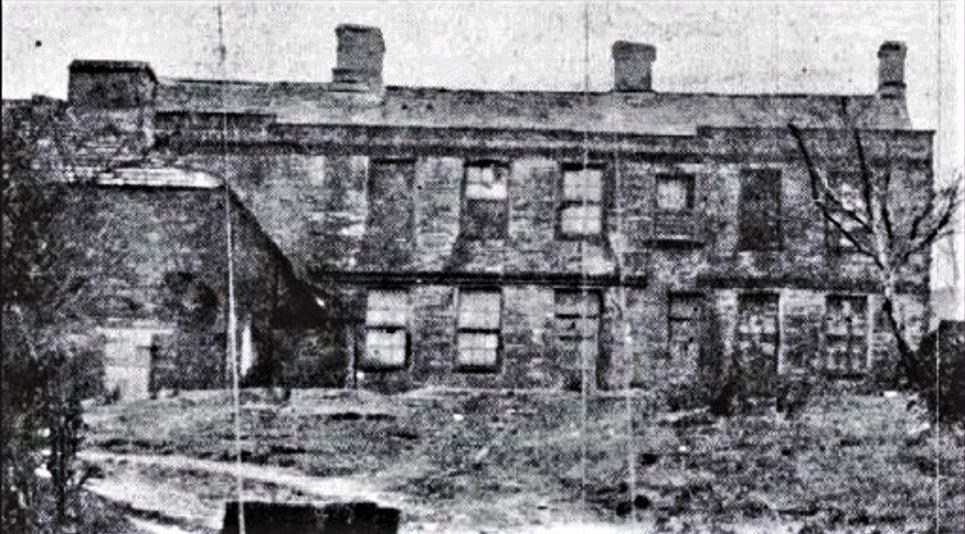
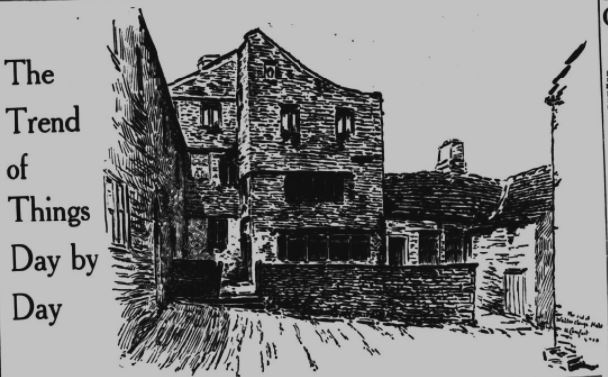
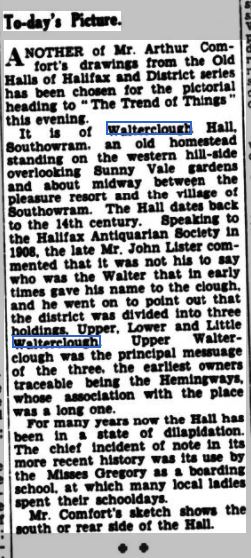
Caroline Wyvile Walker was born and grew up at Walterclough Hall. There are a couple of interesting stories taken from her diaries. Todays story involves a friend of the family called Lord Evelyn James Stuart, who was the 2nd Marquis of Bute, an army recruiting officer who lived at a property called Brooksbank at Bank Top, Southowram. This story occured at a family Ball which Lord Stuart was invited to.
Lord Stuart was amused by a local bookbinder by the name of Edwards and suggested to Caroline's brother that they go and bring him to the Ball so that he could dance with a Miss Edwards of Northowram.
It seems that this act was offensive and caused strong arguments.
Another guest called Captain Collington got involved in the argument and when the men were together in an upper room Collington threatened to throw Caroline's brother John out of the upstairs window. Lord Stuart challenged Collington to a duel on Beacon Hill.
It seems that Collington appeared with no pistol and Stuart appeared with two pistols and offered Collington a pistol; Collington – having no wish to fight – refused and apologised to Walker without bloodshed.
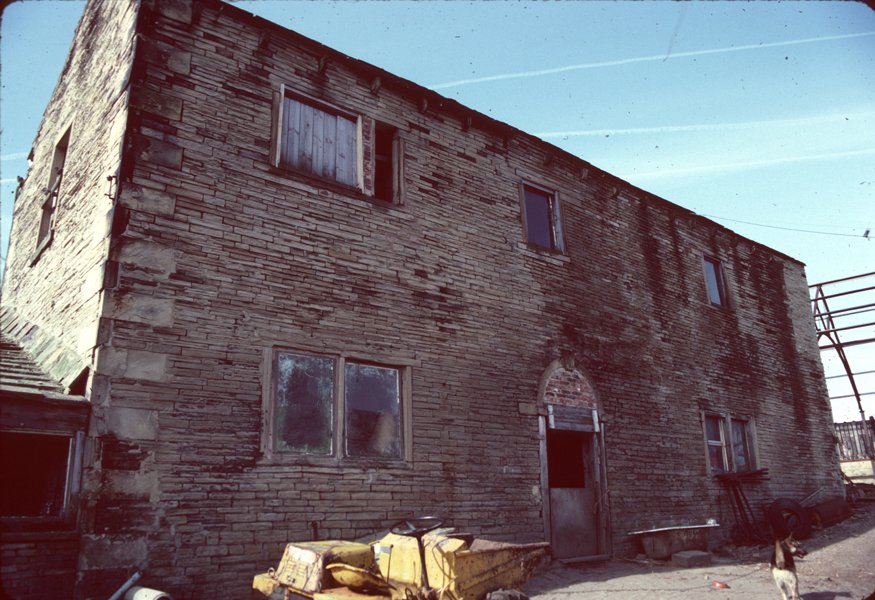
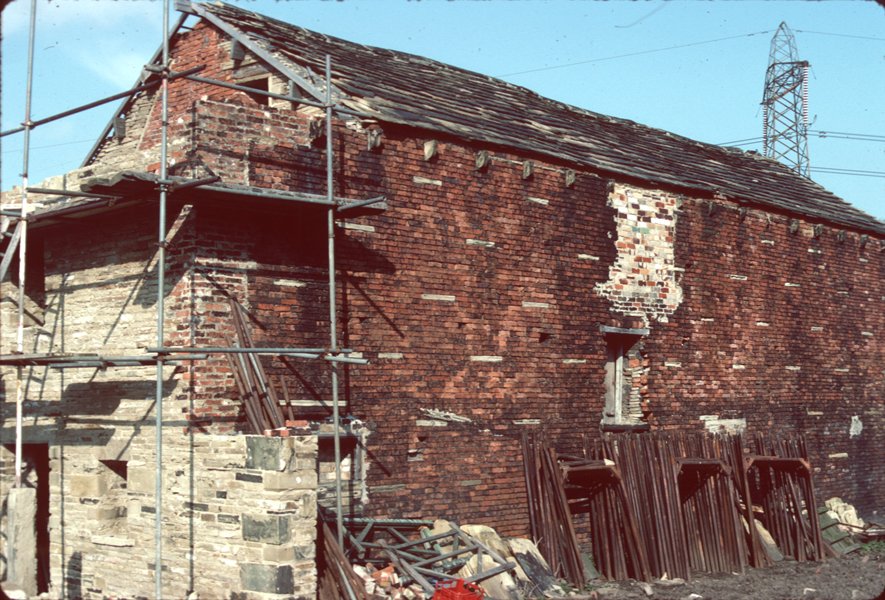
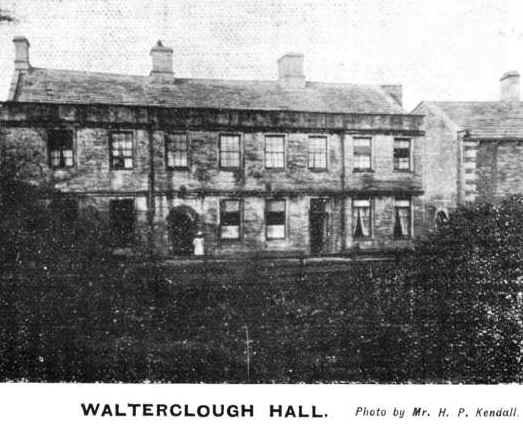
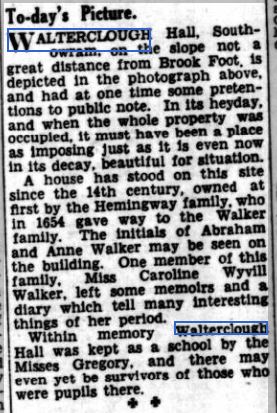
The following photos and information are here with thanks to Mark Buckle
I'm sending you some copies of photos sent by a relation which were taken whilst her father Sydney Scott lived there. He's the gent in the photo taken on the south side of the Hall, next to the door way that led to the farmyard on the east side of the Hall. He lived there with his grandmother Marion Scott (nee Hardy) and her second husband Archibald Scott (who'd adopted him and his half-brother Freddie as babies) in the mid to late 1940's through the 1950's, and possibly even into the 1960's.
I think they moved in there directly after my grandparents and sons (including my father) moved out of Walterclough to Sunny Bank farm across the valley.
My father almost drowned as a toddler when in fell in the water cistern in the kitchen at Walterclough. Like Archie and Marion they only lived in the section that over-looked the farm yard, and which ran about 2 windows back on the right hand side as you look at it from the south. Other parts of the Hall were clearly empty at that time.
In one of the photos you can see the windows that were supposedly blown out when the bombs fell. My grandmother is supposed to have made my grandfather go up on the roof that night to check for German paratroopers that might have been hiding up there behind the parapets. But maybe that's one of those stories that grew in the telling over the years.
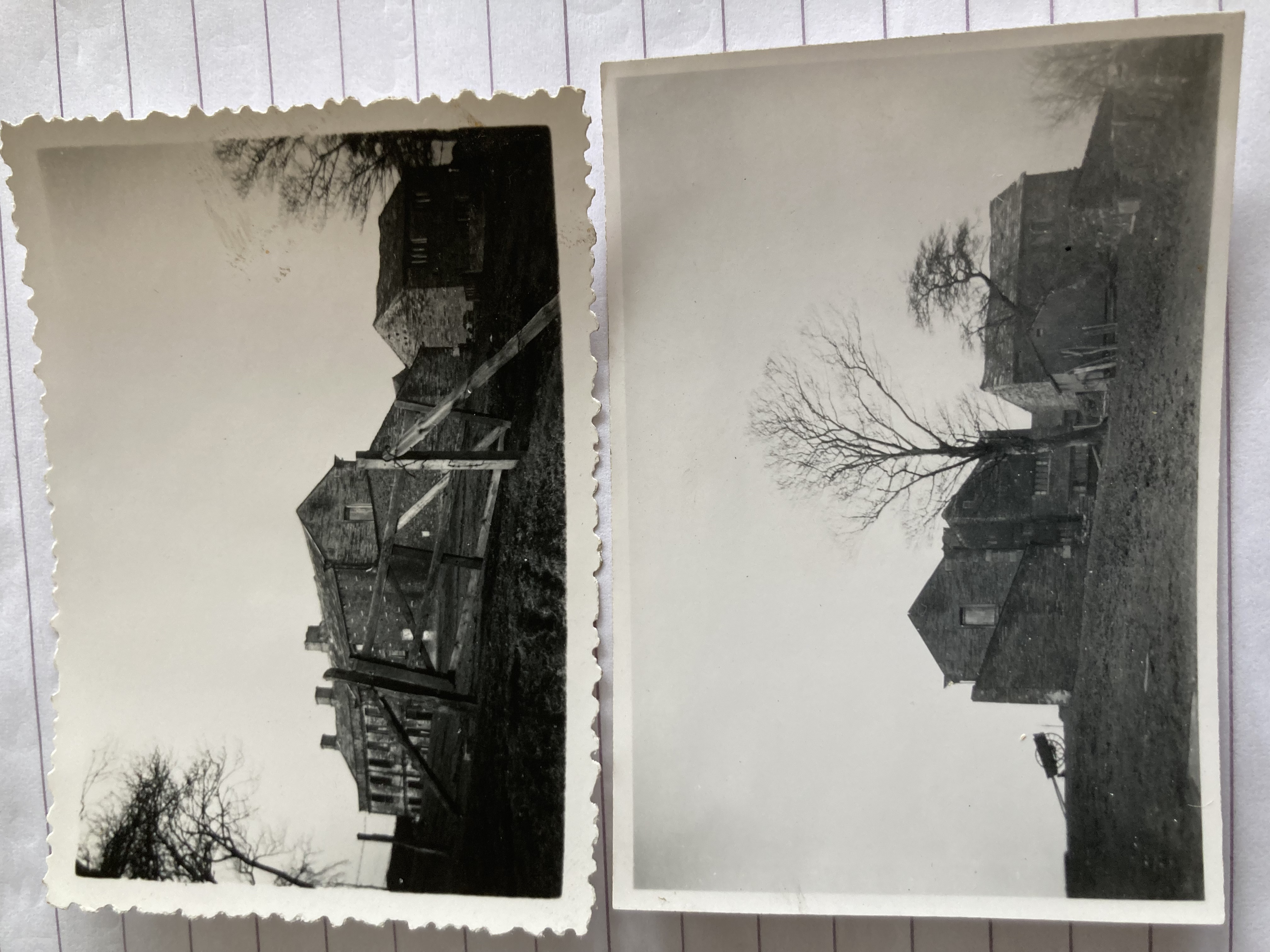
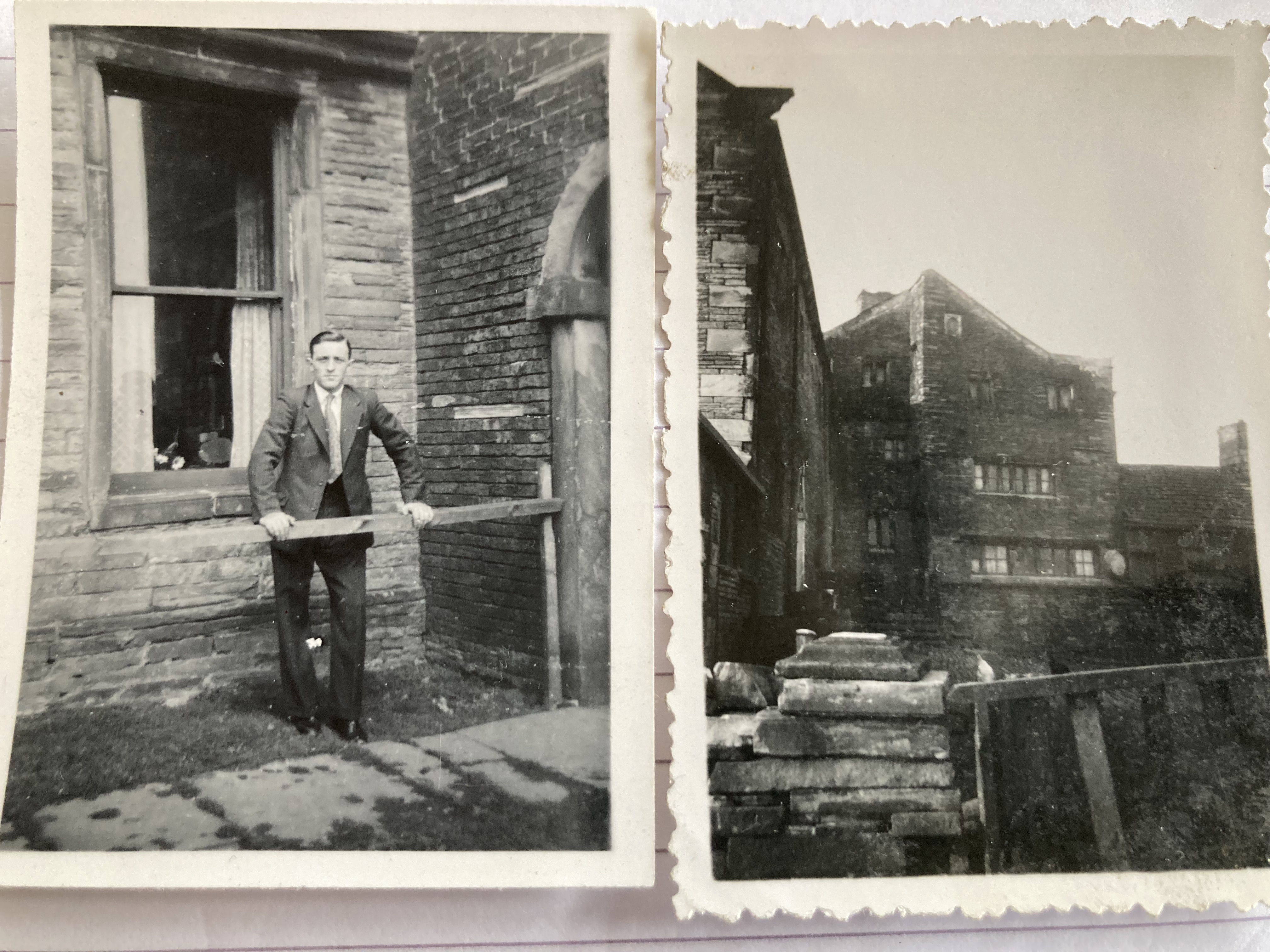
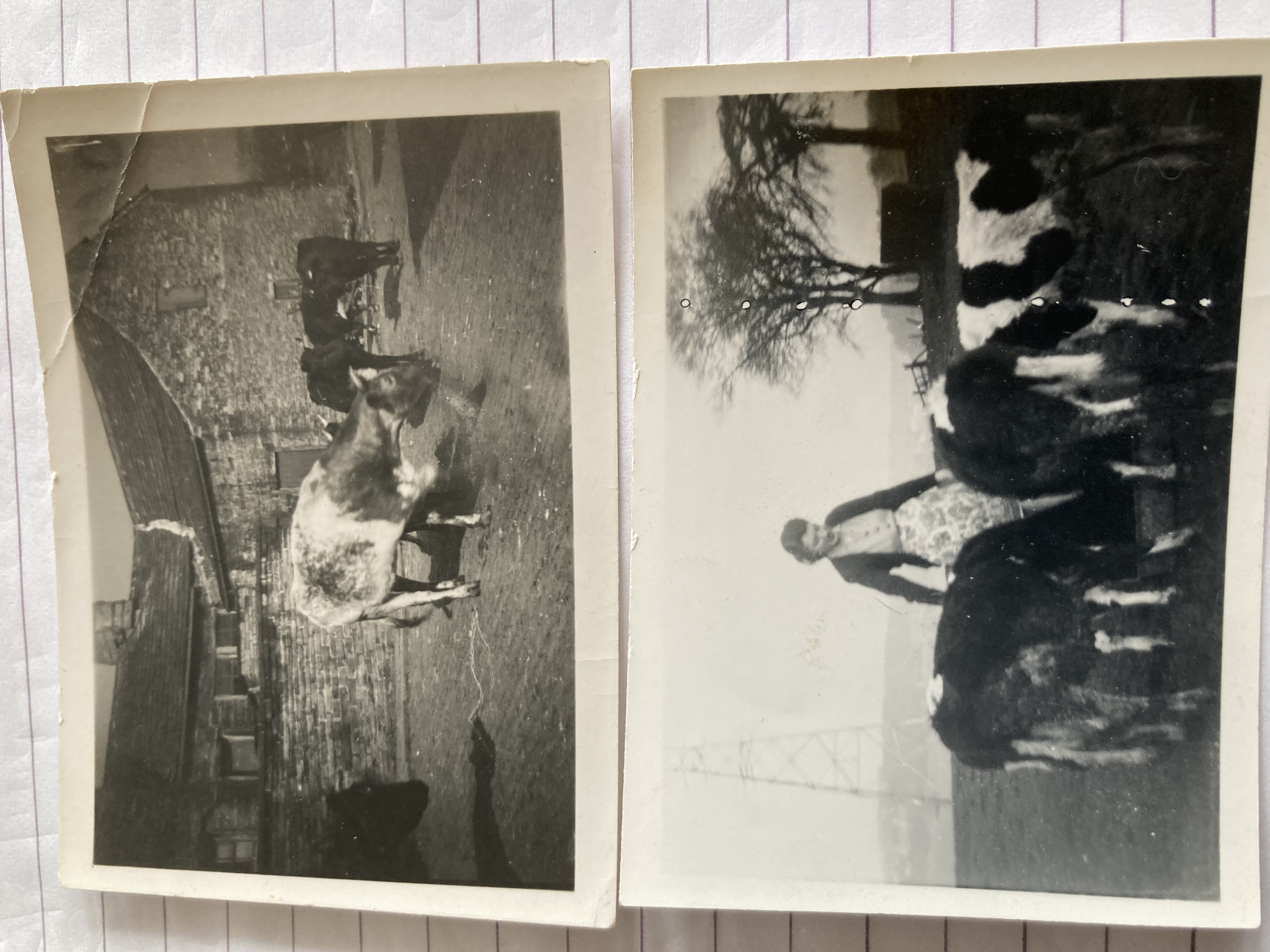
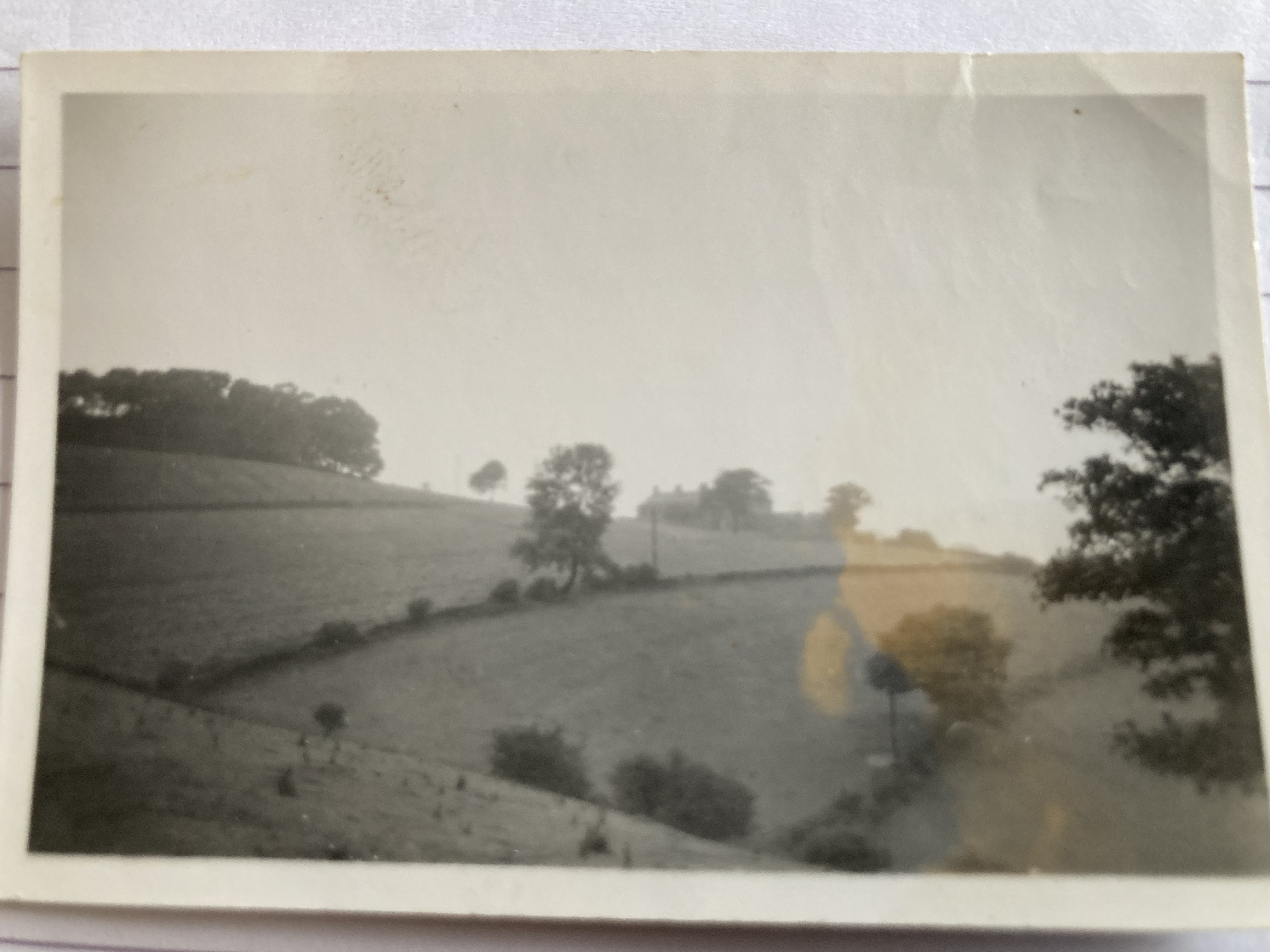
One more of the farmyards at walterclough plus one of my uncle in a forces football team in around 1950. His name was Clifford William Buckle born in 1929. He's kneeling in the centre holding the ball which probably makes him the captain.
The other photos are just showing family members.
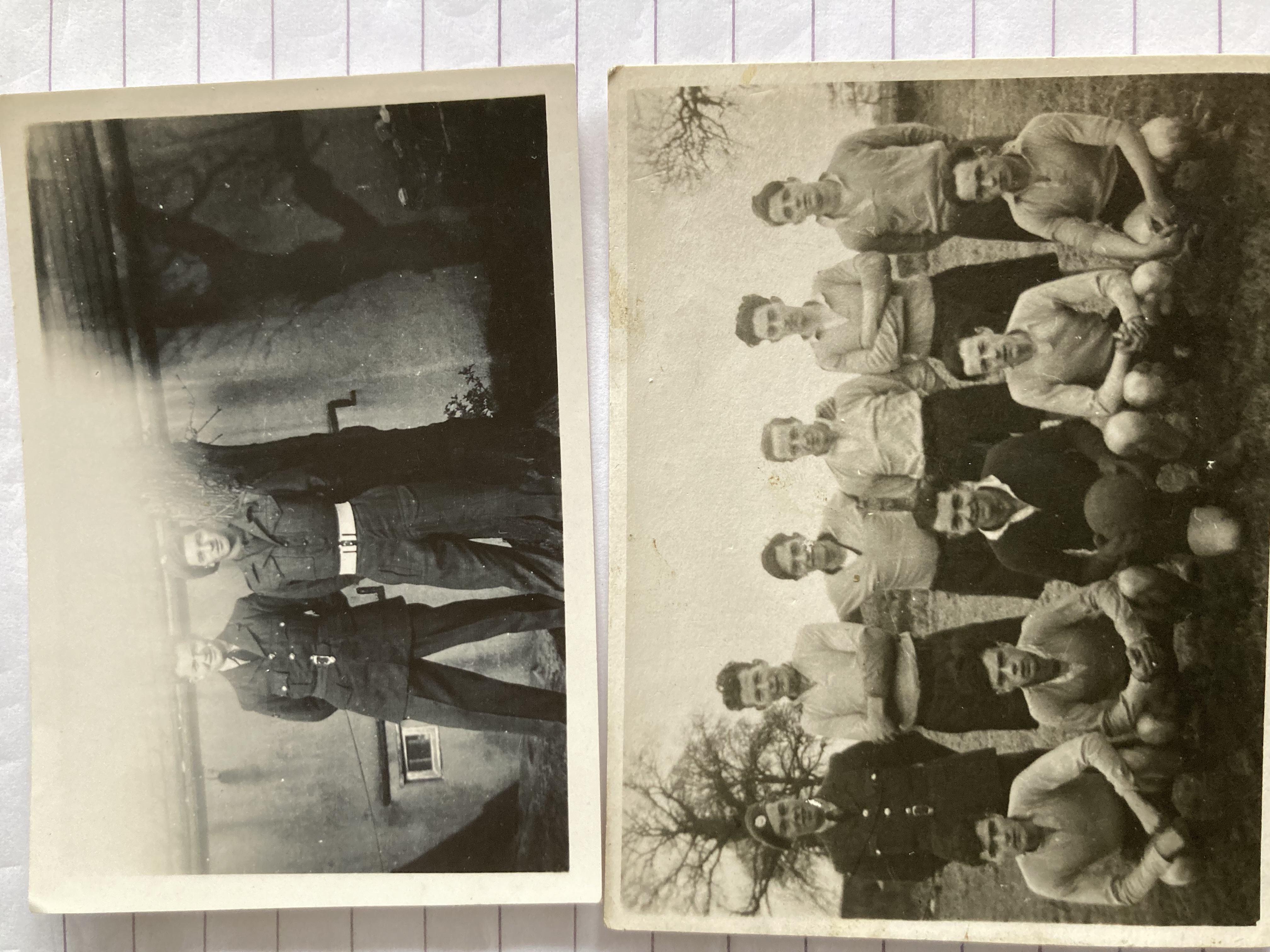
Mark Buckle
The Story of Jack Sharp
John Walker (1699–1771) was the squire of Walterclough Hall in the mid-18th century and was a very wealthy woollen manafacturer. He and his wife, Ruth had four children—Richard (b. 1731), John (b. 1735), Grace (b. 1738) and Mary (b. 1740)—and they also adopted his nephew, Jack Sharp, and provided a home for four aunts and two uncles. *At this point I read in one book that some villagers at the time thought it strange that John and Ruth should adopt Jack. Why the need to do that? If he was their nephew why did they need to adopt him? Rumours went around the village that Jack may have been an illegitimate son. This was probably just tittle tattle though as John Walker seemed to be respected by all, in his personal life he had a loving wife and four children and in his business affairs a reputation for decency and honesty. Whatever the reasons they adopted him, young Jack had a wild reputation and wasn’t popular either with servants or the Walker family’s acquaintances.
In time John Walker senior duly retired and moved away. Sadly his eldest son, Richard had died and the next son, John junior, didn’t get on with Jack. He chose to take no part in the business and moved away to York leaving Jack to look after the business and the Hall. It didn’t take long for Jack to show his true colours. Over the next few years he drank and gambled money, sacked servants and stripped the Hall of it’s possessions, including many Walker family heirlooms.
In 1771 John senior died, and word reached John junior in York that Jack had sold family treasures. John and his wife traveled to Walterclough and found the estate had been excessively mortgaged and most of the contents of the Hall had been removed. Only two rooms remained furnished, and what was left behind had been trashed. John not surprisingly gave Jack immediate notice to leave, he did but still managed to keep a considerable amount of the money.
Jack then built Law House from the proceeds of his villainy, taking up residence there in 1778. Here again I found in another book an amazing fact that I never realised…. Jack is said to have chosen the site for his new house purposely and spitefully, because from Law Hill House he could look down on Walterclough Hall and the Walkers. Hadn’t realised you could see one house from the other til this was pointed out!
And when we say the story is good enough for a book, Emily Bronte came to teach at Law Hill only 60 years later so the tale of the wayward adopted son and his dark dealings would still be talked about in the village. Many believe, with good reason, that Jack and his dealings may have provided inspiration for Heathcliffe and Wuthering Heights.
While most references to Law Hill understandably focus on Emily Bronte’s short time there I also found it interesting that after Jack Sharp had died and before the Patchetts opened their schoolrooms in 1825 the beautiful house was used as a warehouse for a short time by Jeremiah Royds. (Jeremiah was a wealthy cloth merchant who lived at ‘Upper Marsh’ in Marsh Lane and had properties in Leeds and London.) Ironically some time after Law Hill had become a school, by 1870 so had Walterclough Hall, in order to survive. It was registered in 1871 as a ‘Young ladies’ boarding academy’ with 18 resident scholars.
John Bassinder
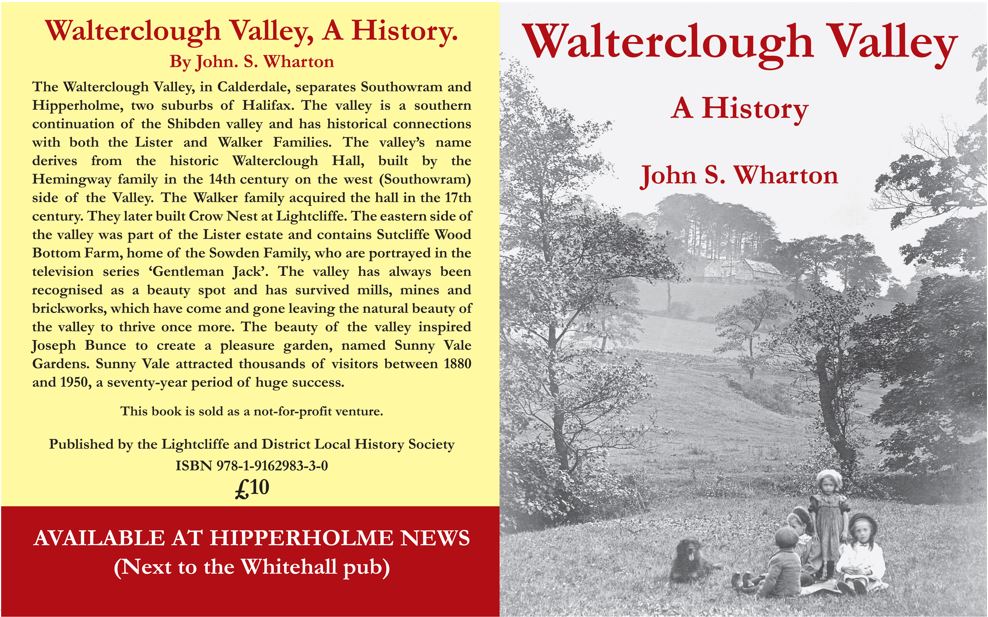
Currently available from Hipperholme newsagents
Walterclough Valley
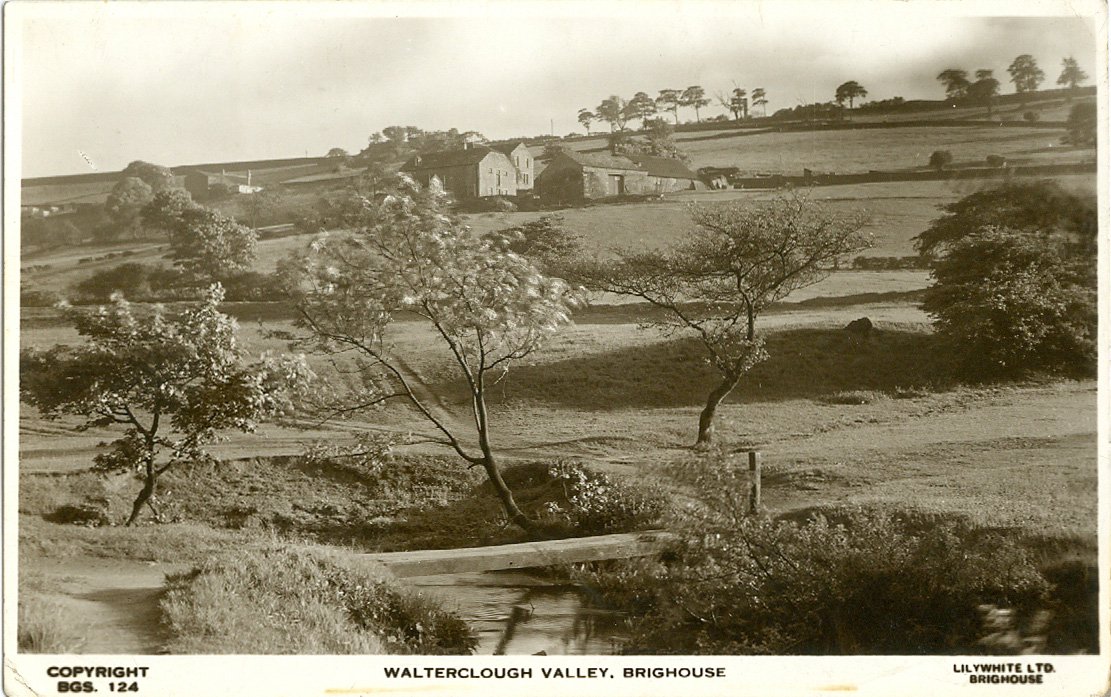
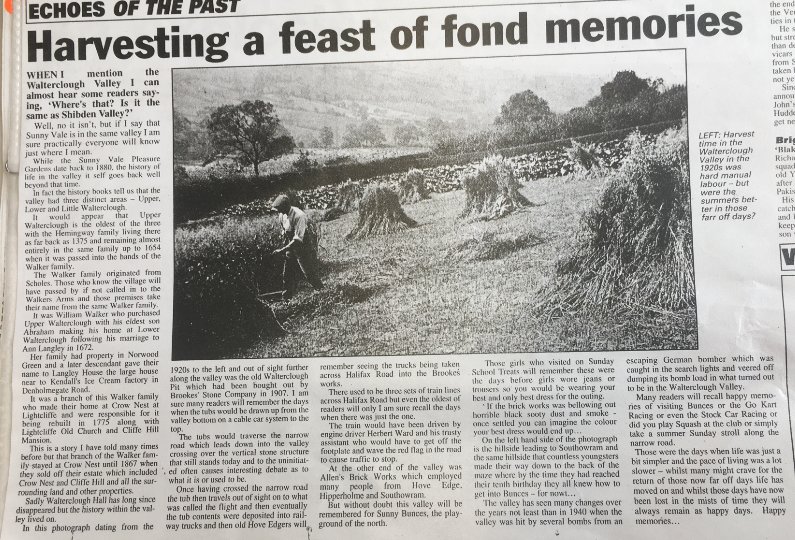
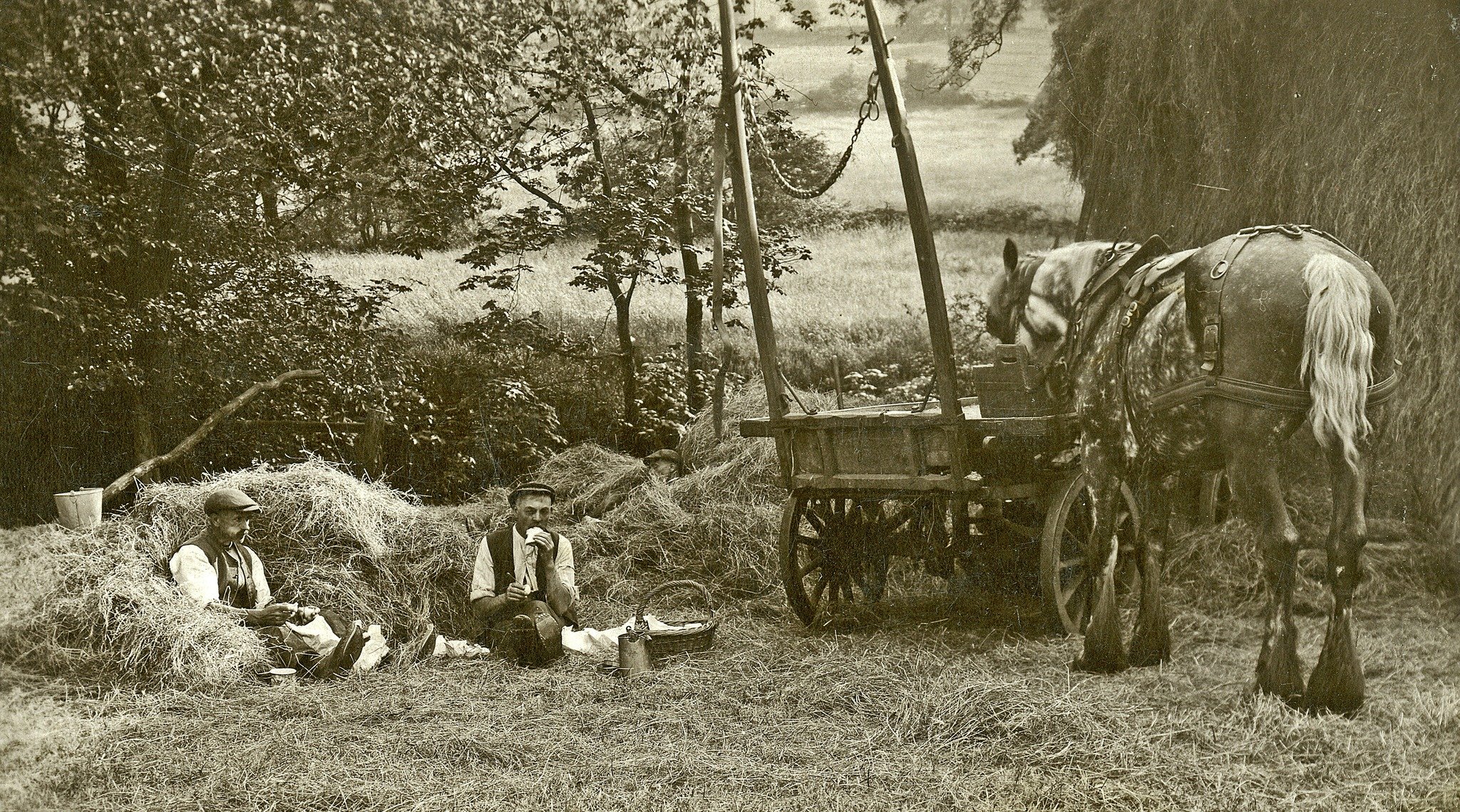
Walterclough Pits
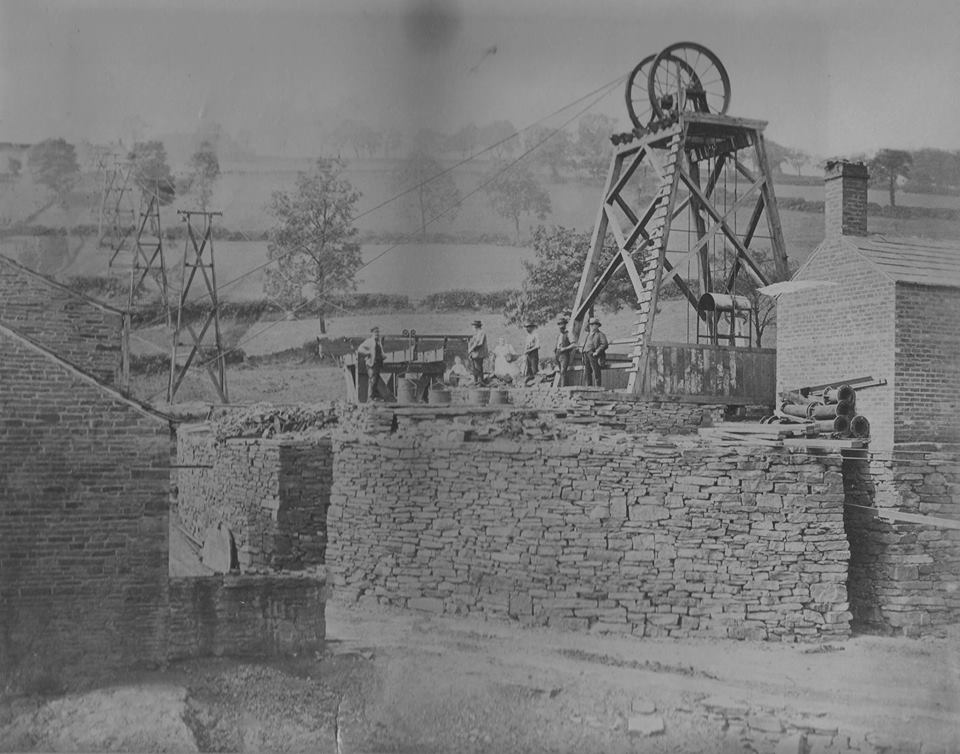
Pier Head was down Stoney Lane from Malt Shovel, 2 cottages were at Pier Head originally built for the workers who operated the pulley system for the coal and coke etc pulled across the valley. This wooden pit head structure with winding gear and an open cage. This is not the one which operated to Hove edge from the 1914 war until the 1950s but a previous one operating to Pier Head. Here they were picked up by horse and cart.
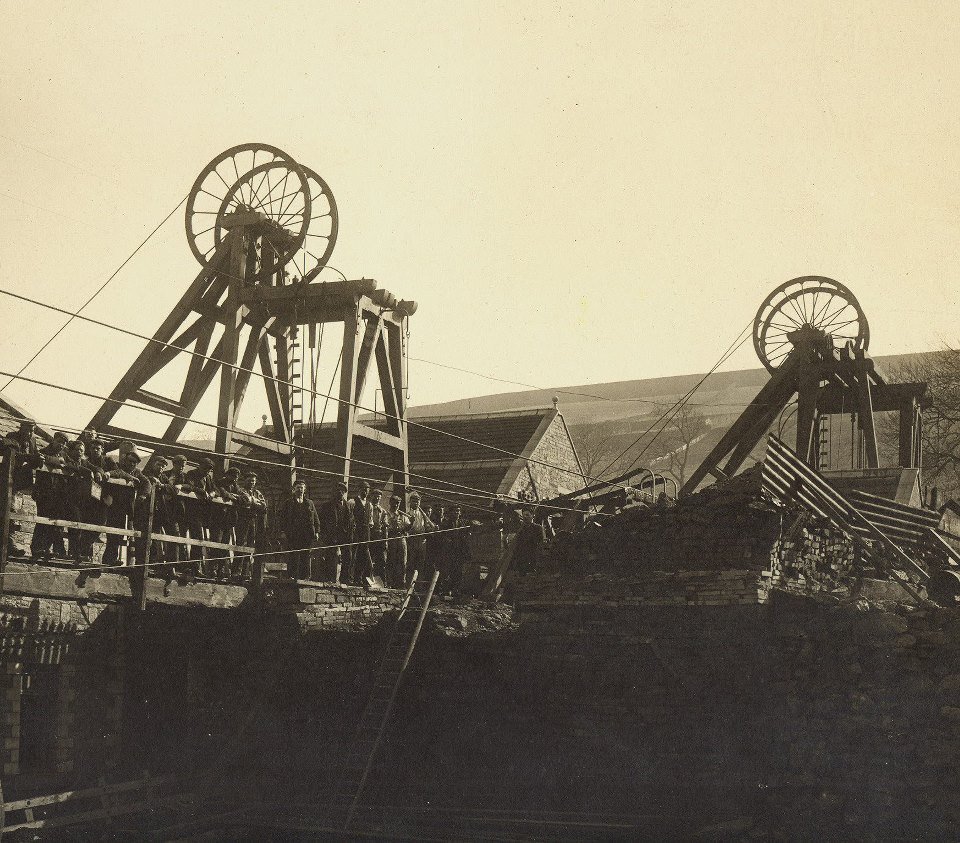
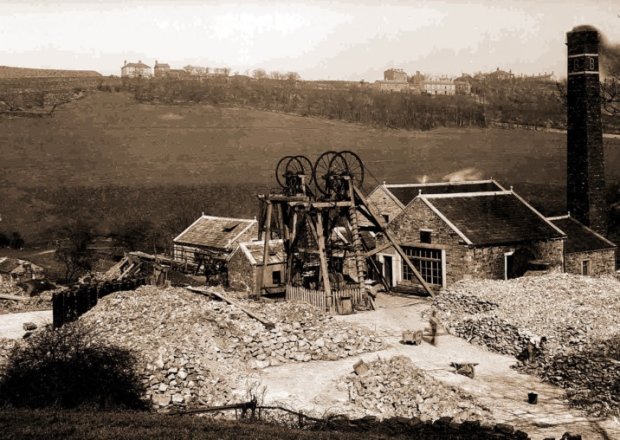
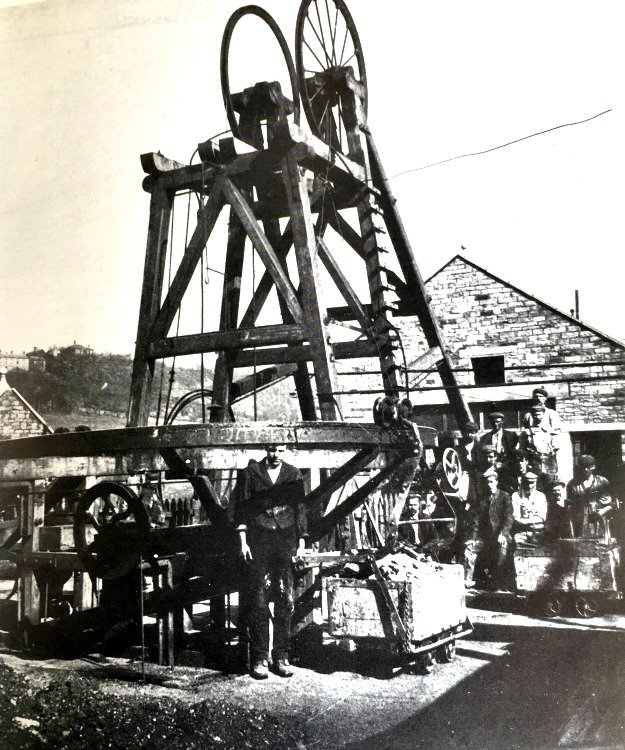
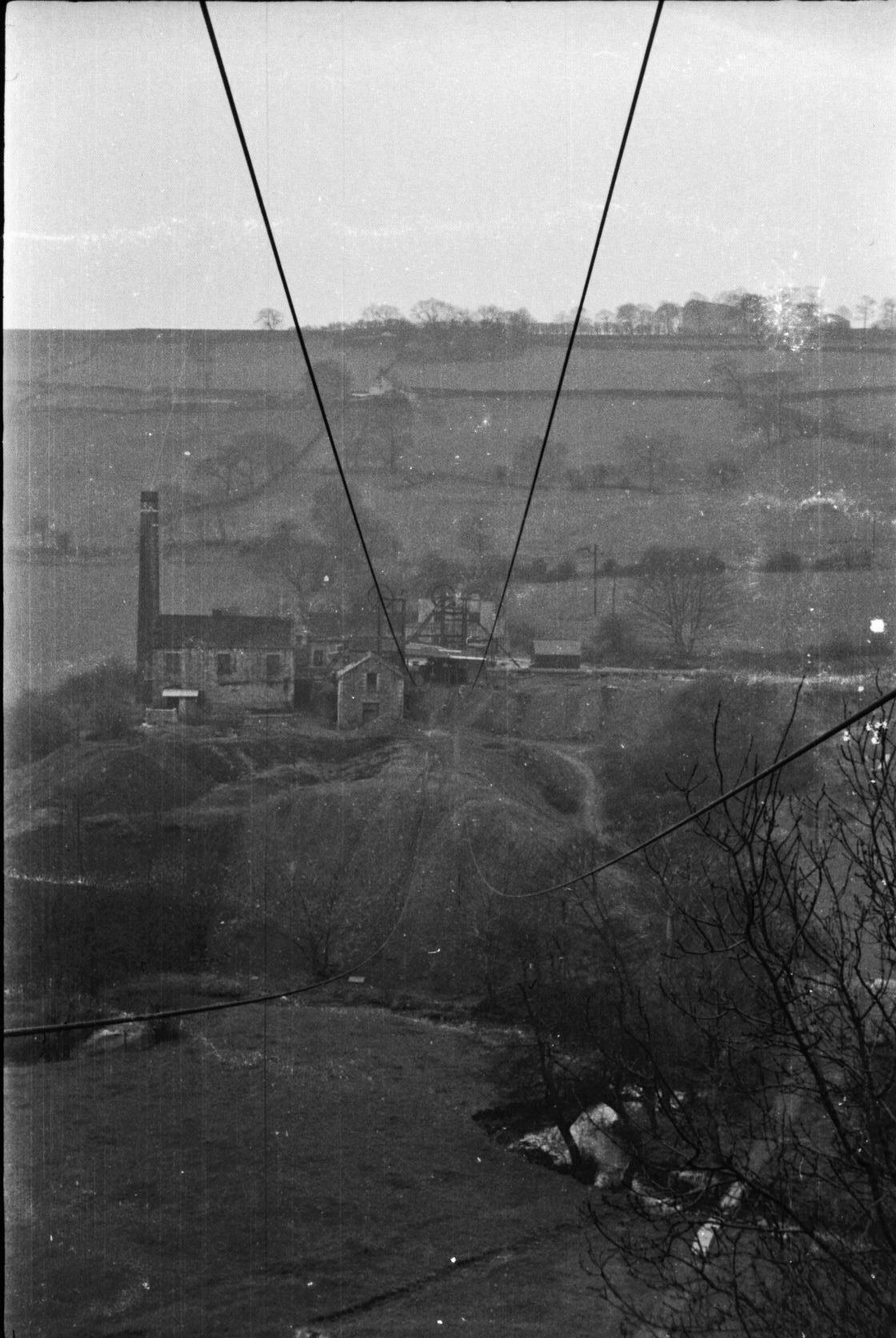
THE WALTERCLOUGH TRAMWAY
This much talked of tramway from Waterclough pit to Barker-royd, Southowram, was completed yesterday afternoon, and the trial which was made of it was most successful. Unlike the ordinary tramways, the "lines" are suspended in the air, and carry their freight at an elevation of over thirty feet. It may be described as consisting of an endless wire rope, supported on a series of pulleys carried by substantial posts, which are about 300 feet apart. This rope passes at one end of the line round a large wheel which is fixed horizontally, and which is driven by the water-wheel a little below the pit. The speed at which the wire rope travels is about four miles an hour. The buckets in which the coal is carried are hung on the rope at the loading end, the attachment consisting of a pendant of a peculiar shape, which maintains the load in perfect equilibrium, and at the same time enables it to pass the supporting pulleys with ease. At the other end of the line a similar arrangement exists as at the loading end, by which the buckets can be run on to a rail so as to free them from the rope, which is not required to be stopped. When emptied the buckets can be run round the wheel, and on to the return rope, in the same manner that they were taken off. The length of the tramway is 420 yards, and the rise from the pit to Barker-royd is 100 yards. We understand that at last two men ventured on the rope, and was safely carried round. By this arrangement, coal can be carried to the top at the rate of about a ton in five minutes. The tramway has been erected by the London Tramway Company, under the superintendence of Mr Gray, the engineer. Our readers should avail themselves of a visit to the place as it is a great curiosity.
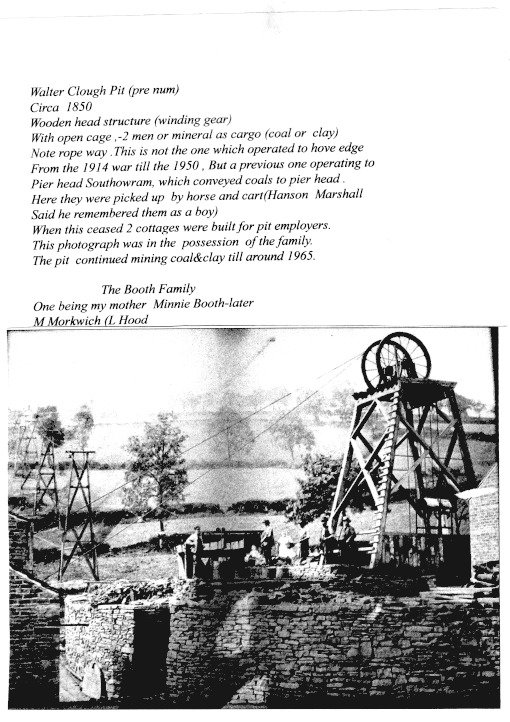
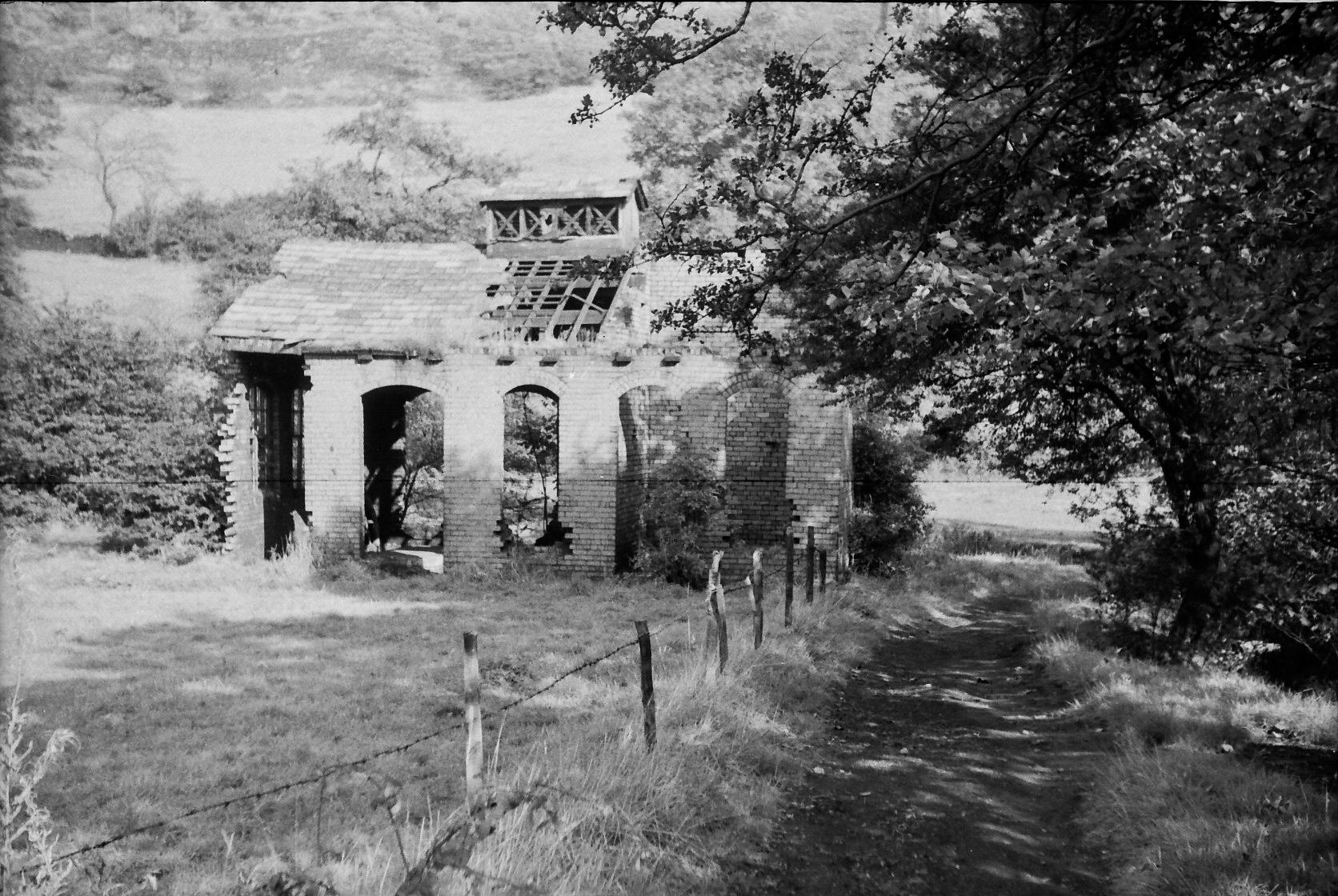
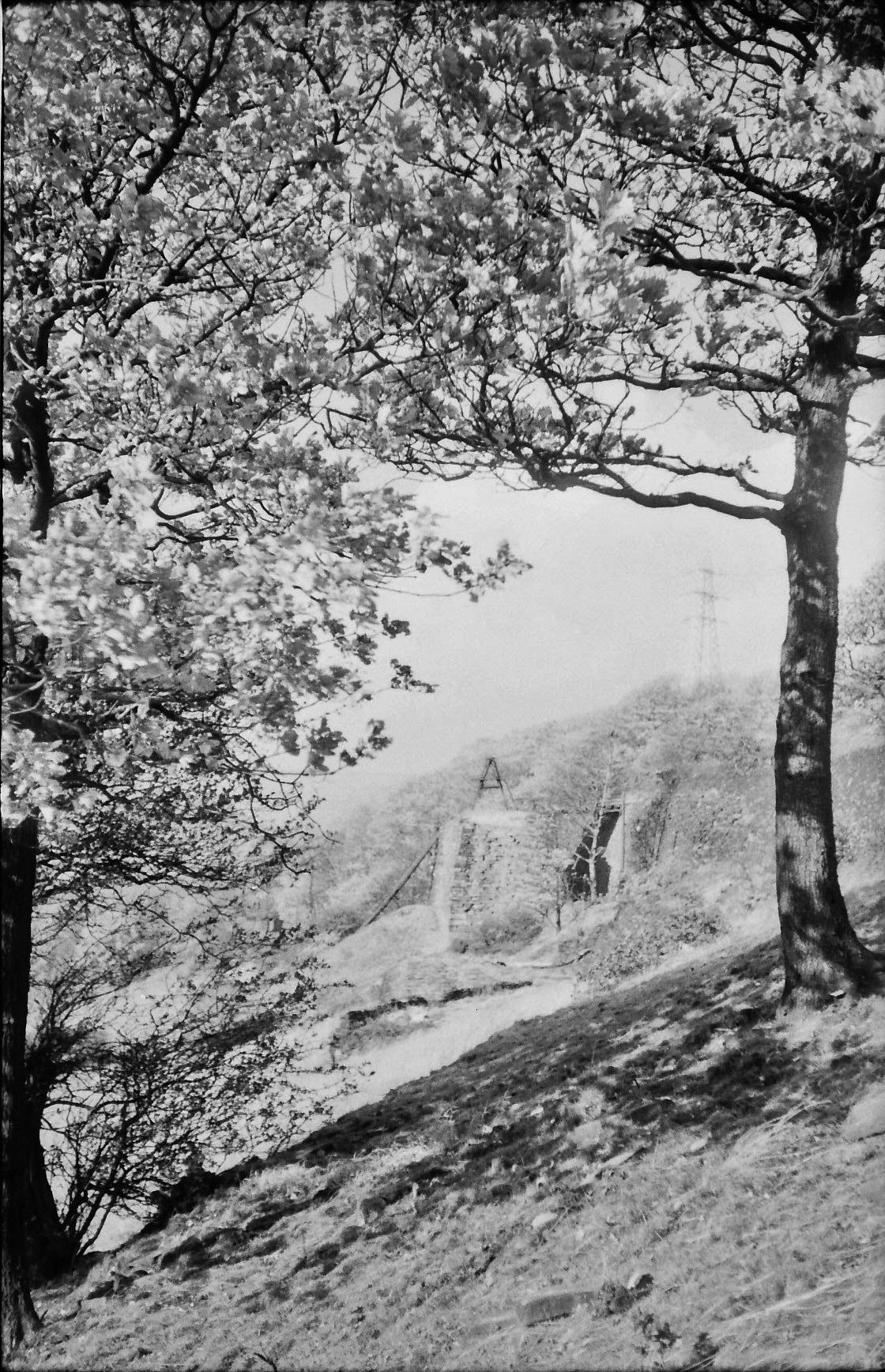
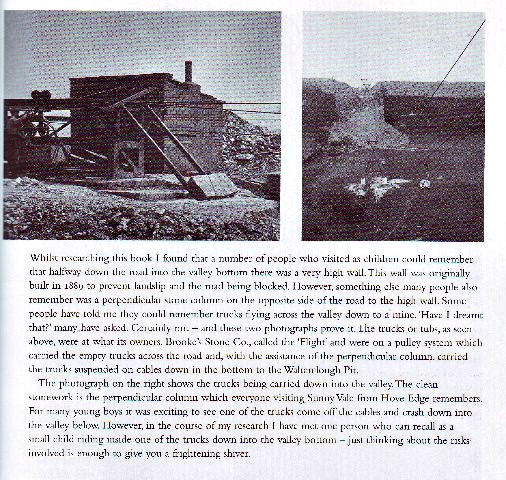
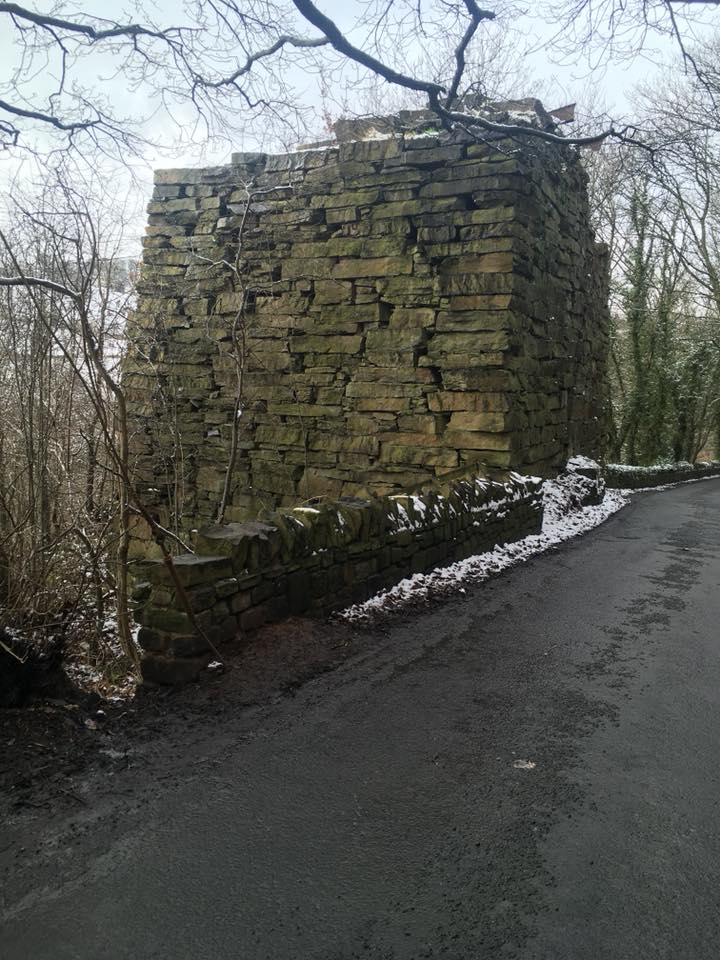
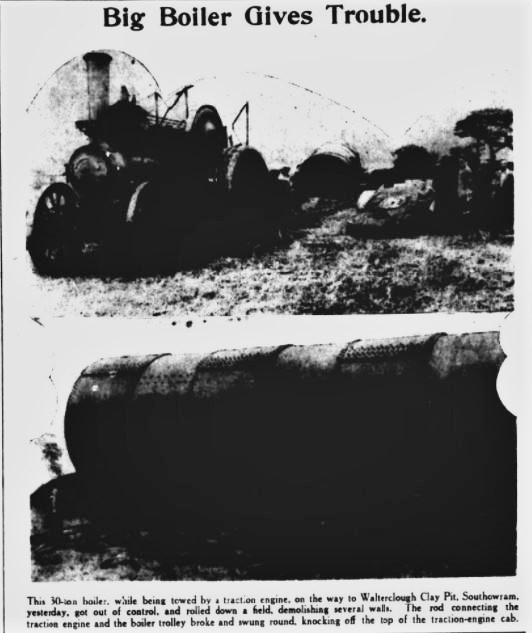

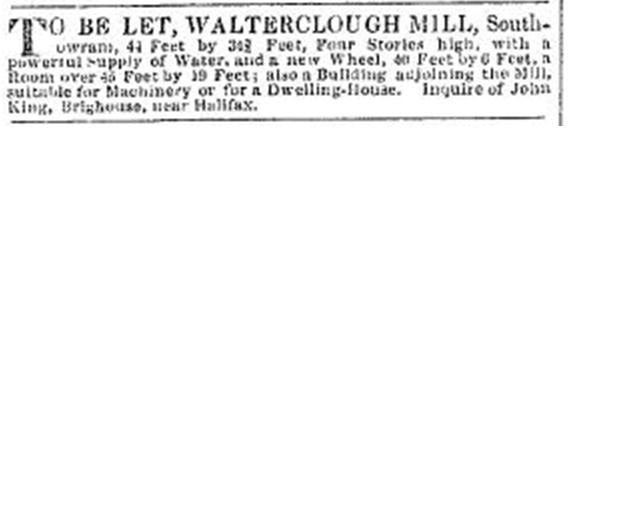
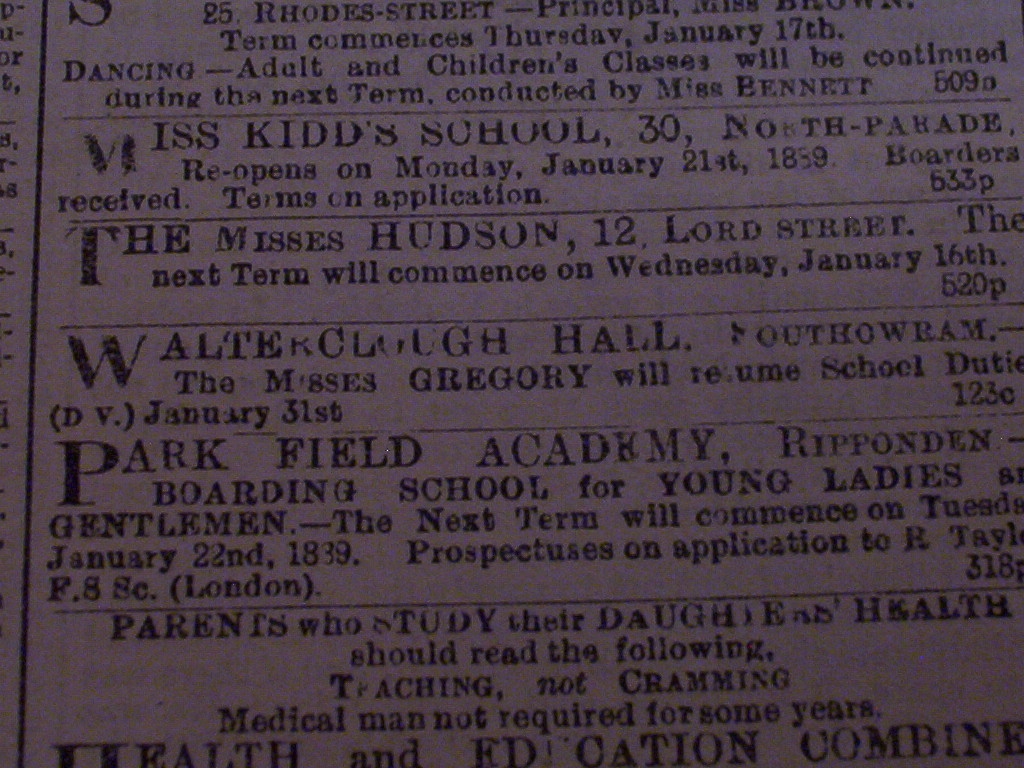
The Red Beck or Brook enters the township near Mytholm, and forms the boundary from thence to Brookfoot. The valley is fertile and picturesque. On the Hipperholme side immense ‘stone-barings’ imposingly overhang the secluded farms, and threaten to overwhelm them. This hill side was formerly a wood, and is still known as Wood Bottom. A walk up this valley in Spring is truly delightful, and we have little sympathy with one of whom it may be said – “A primrose on the river’s brim, A yellow primrose is to him, And it is nothing more’
Wood End is near Hipperholme station, it was formerly a small farm-house, and has recently been rebuilt. The ‘barings’ from the stone quarries having given way, the barn had to be taken down.
Far Wood Bottom bears the date W.B.M. 1749, £10 a year from this farm is paid in Southowram Church. Wood Nook is a small house bearing on the mantel-piece thr date P/T. 1628 – It belongs to the Listers of Shibden Hall. Middle Wood Bottom belongs also to the Listers, date I.M.L. 1713. But the back part of the house is older. Sutcliffes, and their relatives the Sowdens, have lived here since 1780. The tenants previous to 1780 are reported to have all died of the plague, except the master of the house.
Near Wood Bottom farm formerly belonged to Mr. Thompson of Southowram.
from Yorkshire Indexers
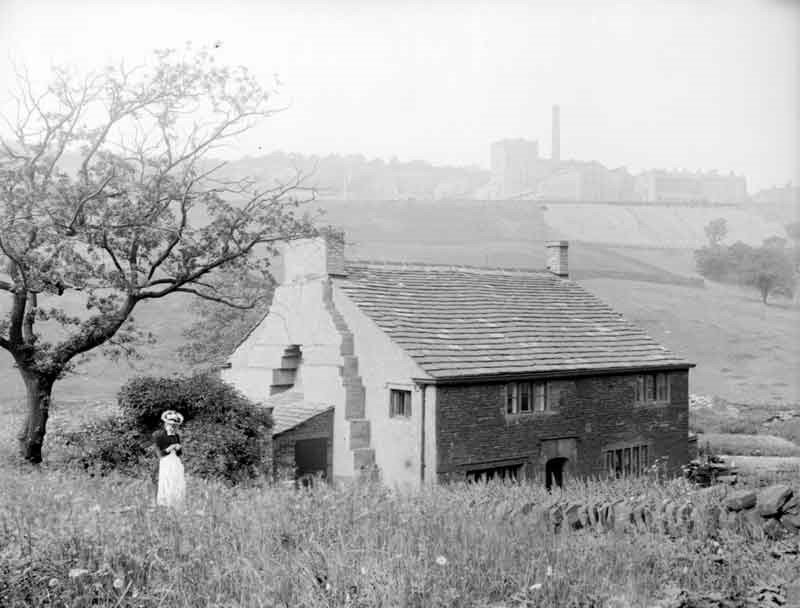
Old Dumb Mill stands at the far end of Walterclough, just before you reach Hipperholme. Hipperholme brewery can be seen in the background.
Return to Southowram History
Continue to Homepage
If you have enjoyed your visit to this website, please spread the word by clicking the 'like' and 'share' buttons below. Thank you
